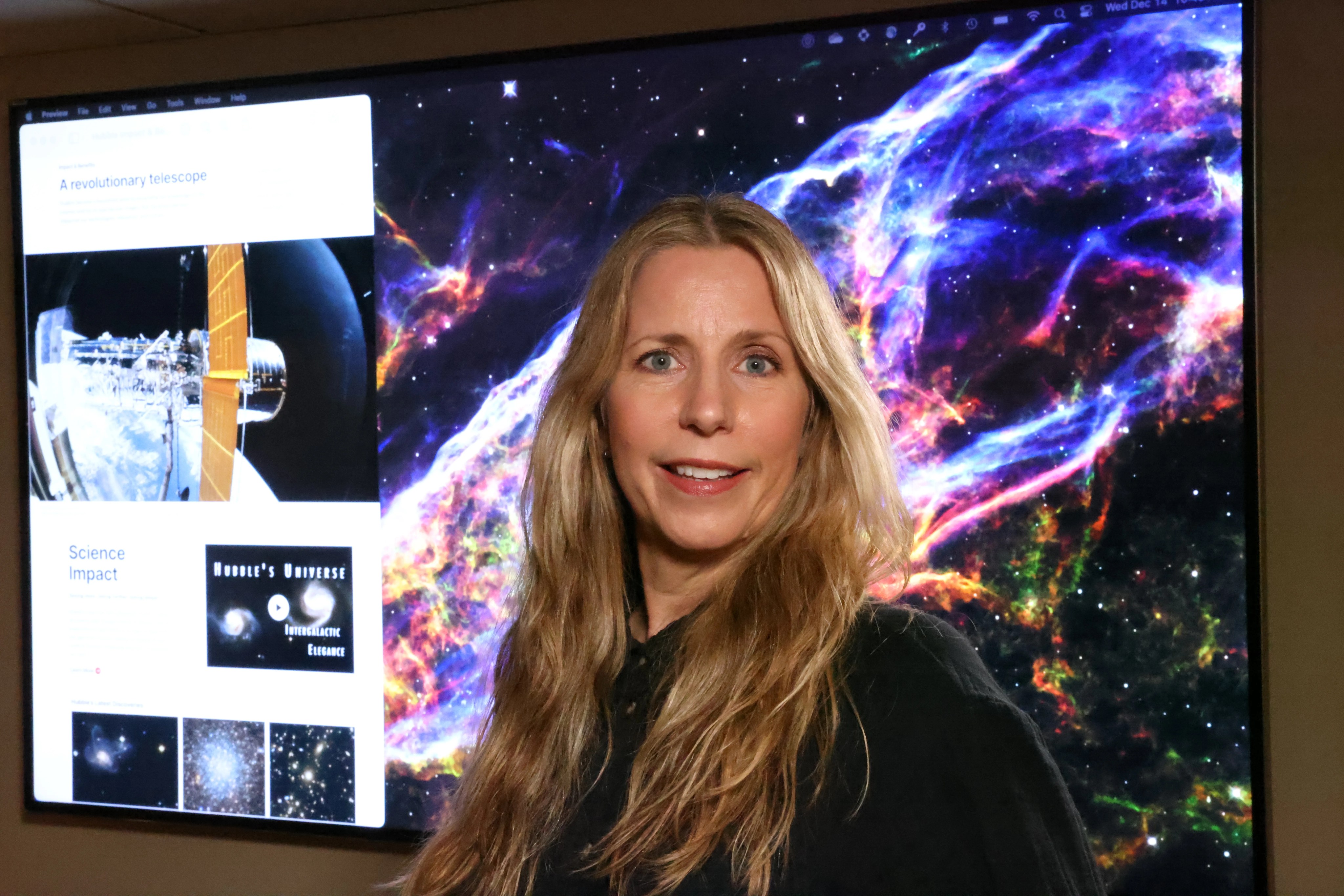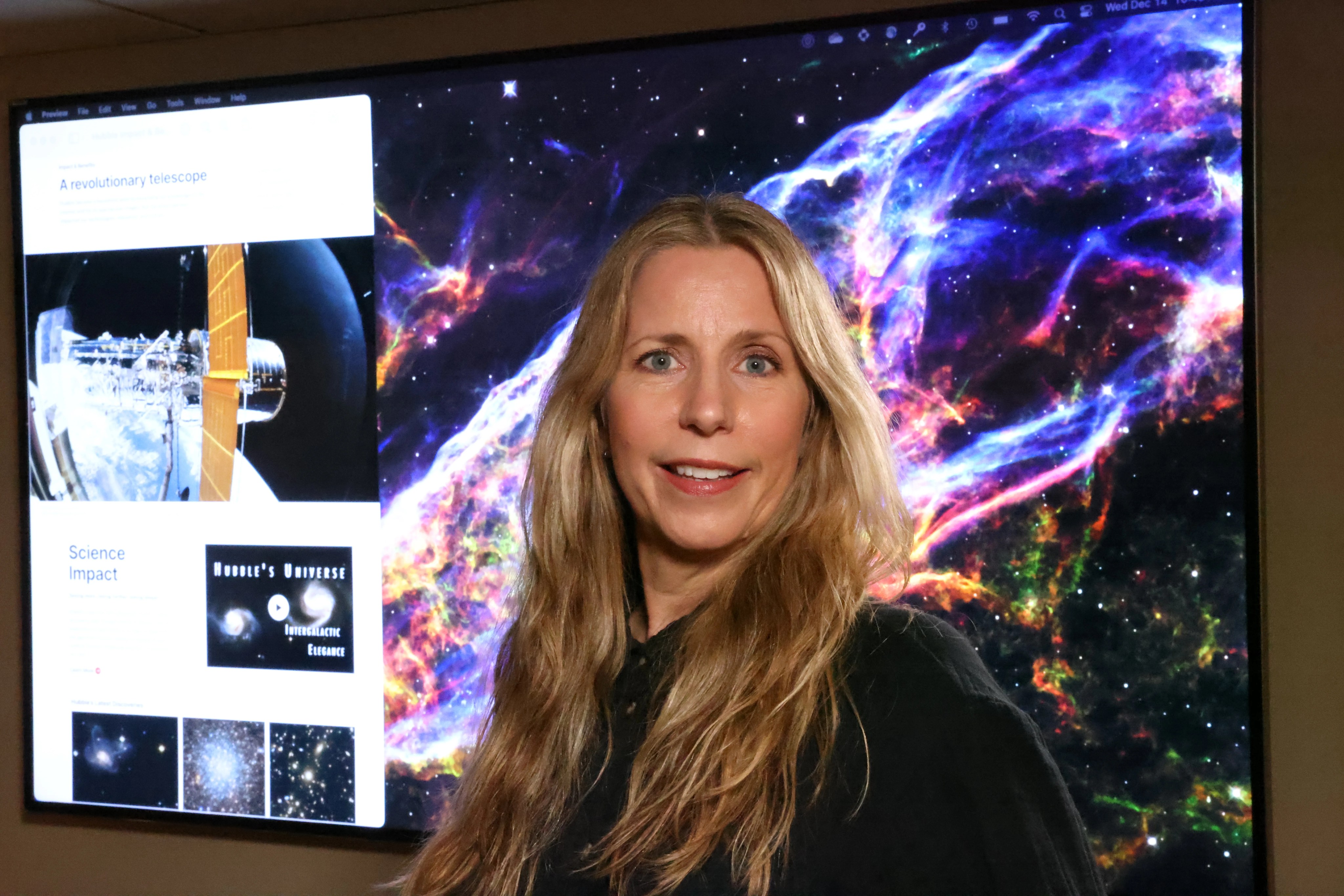
Michelle Belleville
Web Design Lead
Michelle Belleville’s career plan was all about stars.
But not the kind you’re thinking of.
“I wanted to be a musician,” Michelle said. “I wanted to be a rock star.”
And when she left college to jump wholeheartedly into the music scene, she found a complex, enriching world of stagecraft that would eventually lead her to a role as a creative lead and design strategist for NASA projects including the Hubble Space Telescope.
“I still have, of course, a love of music,” Michelle said. “But it's the love of the whole experience of theater and music ― and designing and building a better experience for everyone so they can enjoy the love that I have for it, so they're able to experience that as well.”
I was going to either be an accountant or a rock star.

Michelle Belleville
Web Design Lead
Though her interest in design started early ― “My mom said that I was always laying out things or trying to design my room or redesign everything. I always had that in me as a kid.” ― Michelle started her career in music, performing as a traditional jazz bassist before moving down the path of punk and alternative rock. She toured throughout New England and later Minneapolis with a number of groups, enjoying the freedom to experiment with different types of music. By day, she worked at an insurance company, which paid more bills than performing. But it wasn’t a situation where the day job was a necessary evil ― Michelle truly enjoyed working with data and equations. “I was going to either be an accountant or a rock star.”
Michelle excelled at organizing numbers and understanding their impact. As computers and the internet became imbued in daily life, she began to use those numbers to tell stories. “You could create spreadsheets, beautiful spreadsheets and visualizations. You could visually design and program these websites and everyone on the planet who was connected to the internet could see those results, and that’s when I really started getting excited about the new technology coming around.”
In her music career, she found herself drawn to the design aspects of the music industry ― the stage design, lighting, outfits ― as well as the computers that began steadily working their way into performances. “I had one of the original drum machines and I would start programming it out,” she recalled. “You would have to sit in front of the machine and play bass and some guitar and have a tape recorder next to it, and then pull it all together, and I would bring that music I recorded to other musicians.”
Experimenting with computers, Michelle learned how to code and create visual elements on the screen before the software existed to make that work more intuitive. She became involved in creating band logos and materials, manipulating lighting, and even dabbling in sound production. At the time, there was no formal education for most of these rock concert production aspects. “I would go to the theater or rock shows or a large stadium experience and start talking to people about how they do what they do, and I dove into sound production and lighting production, and all the way I pretty much learned on my own. ”
At her day job, she moved from accounting to sales as her skills at turning numbers into dazzling presentations ― complete with visualizations and music and print materials ― came into demand. She was hired as a creative director at a tech development firm in Virginia, working primarily on websites, and then as a creative director for a design studio working in the digital realm.
What she was embracing and learning in bits and pieces, she realized later, was something now called “user experience.”
“It's where you're completely immersed in a specific subject, be it a website or walking into a coffee shop. You want to have that experience of everything from smelling the coffee to seeing a beautifully laid out room to spending money and tasting the coffee,” Michelle said. She was fascinated by how all the pieces of a concert united to create a unique immersive experience, and how the same elements on a small scale could get people excited about a product. “I loved the visual side of that experience and the computer side of it. You can design a whole visual experience on a laptop and send it off, or have the band tour with that laptop and they just plug into the console and go venue to venue and have the same visual experience.”
Michelle was hired by NASA in 2018 as a graphic designer, eventually becoming the senior creative project lead for flight projects. She is the design lead for both the Hubble mission website and the NASA Science web modernization project, which produced the new design system for NASA.gov. She works on overall design strategy, information architecture and navigation for the Hubble website and helps coordinate and creatively design and modernize websites throughout NASA. As a user experience expert, she uses both design and coding skills to ensure that information from NASA missions reaches the public in a creative, engaging and appealing way.
The job combines her love of numbers with her design-oriented drive to create the best possible visual experience. “With NASA, you need to understand both of those sides of it to produce something that represents what the scientists or engineers are trying to portray in a way that the end user understands it and digests it,” she said. “They’ve always been hand-in-hand all along.”

